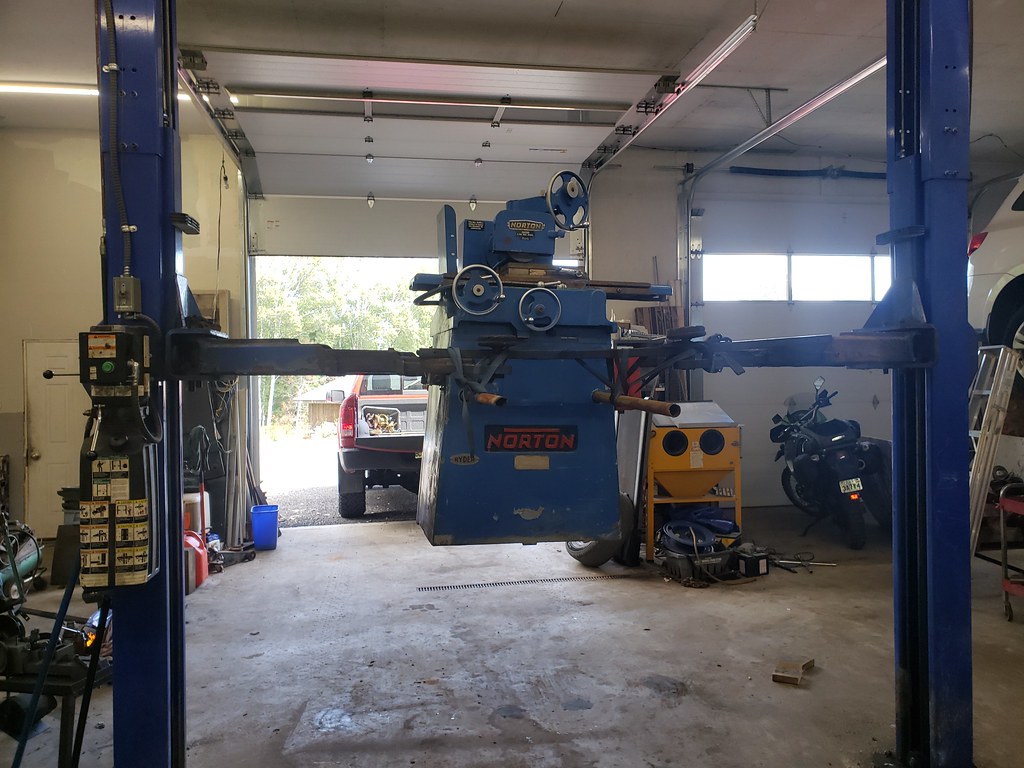. But you consistently say it in a way that insults the VFD
Anthropomorphism. I proffer no VFD has ever had its feelings hurt by my remarks
and sings the praises of a bigger machine.
Where have a I done that? Its not fair to inject things into this that I haven't said
In my home shop, my biggest lathe weights 5200 pounds, the lightest is a 6mm Lorch watchmakers lathe. Its about the right tool for the job and I don't ever recall praising a bigger machine just because its bigger
Hp alone is not the holy grail.
I haven't call anything a holy grail. HP is, along with rigidity, a key component determining how much work a machine tool can do. If you can't get a machine to deliver close to the same HP over its speed range, its a poor performing drive compared to one that can. That's it in a nut shell
Again, within limits there are other ways to skin the cat.
No there are not. This is not how to fixture something or do an operation etc, its a physics formula. Power = Torque x RPM. To the best of the species collective knowledge, that will be true always no matter what
The VFD is not a fake improvement.
Understanding how they work and their limitations does equate to thinking they are fake. They are quite real. I use them a lot, on several machine tools I have have them installed for certain benefits they provide. At work I have 15hp cnc mills - why are they 15? Yo ensure there is some umph left at lower speeds, and its a lot cheaper to put huge HP servo on them than an automatic transmission
Within limits, they do work.
they do, and I use them. I did not ever say they didn't work. I also retain and use the mechanical transmission as well for all obvious reason; they increase torque as speed goes down.
And they are a gift to those of us who can't have the bigger machine.
I don't know why you keep referring to this. How is the size of the machine relevant? I haven't made reference to the size of the machine and what I've said is true regardless of the machine's size
He did a great job of describing the difference but didn't knock the VFD in the process.
Its a factual discussion. Shouldn't pointing out facts around a device's characteristics be just that? Un-emotive factual, technical, etc. You make it sound like I'm anti VFD. I'm not, I use them, understand their pros and cons. However they're inanimate objects best used with a full understanding of their pros and cons.
I'm guessing you are not doing this on purpose. I admire most of your responses elsewhere on the forum. Your knowledge and experience runs very deep. My guess is that this is a little like that time you told your buddies wife (let's call her HP) how beautiful she is (and she really is), but now your wife (let's call her Torque) who is beautiful in her own right, is pissed off at you. I doubt you do it on purpose, but I did take offense to it and felt obligated to take you to task over it.
Thank you for the positive remarks, but this paragraph drips with anthropomorphism. These are devices to be used and understood, not women (who do not like being used and cannot be understood
Now, I'm going to go make something. Lost 3D printed wax investment casting is today's topic
Last edited:


